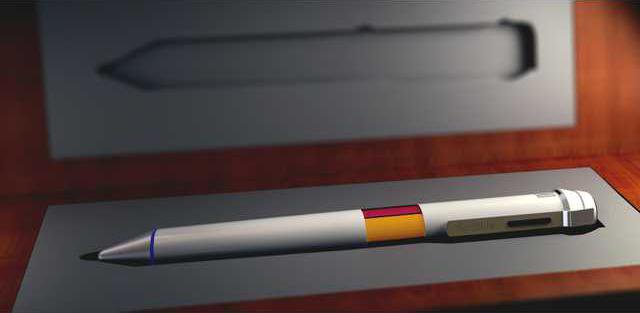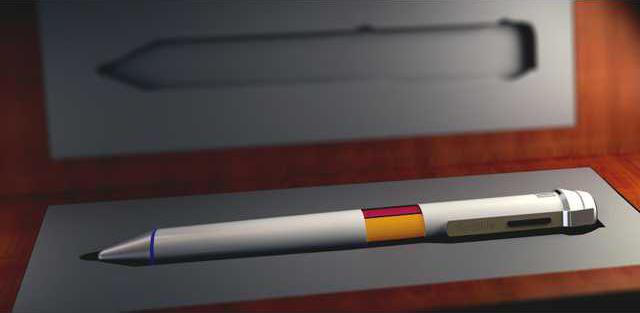![]() CALIFORNIA — Have you ever struggled to match a color for a project?
CALIFORNIA — Have you ever struggled to match a color for a project?
A new pen aims to eliminate that problem. The Scribble pen, soon to be launched on Kickstarter, claims to allow doodlers and designers alike to pick any color they see and then use it to draw on paper or a screen almost instantly.
“The Scribble color picker pen will make copying an exact color, any color from any object, an absolute breeze,” a company spokesman said in a statement.
The pen has a color sensor at the top that can detect the exact shade of the object you point it at, whether it be a flower or a painted wall, according to the company. Then it processes the information and mixes ink from refillable cartridges to let users write in the object’s color.
More than 100,000 colors can be stored in the pen’s internal memory, according to the company. It said the cyan, magenta, yellow, white and black ink cartridges can be mixed to create more than 16 million unique colors.
The pen could theoretically be used for a variety of purposes ranging from art to home decor. CNET writer Michael Franco said he hopes it could be used to match the exact color of the 100-year-old red door to his home, so he could buy paint in the correct shade to fix a chip.
The company also plans to sell a Scribble stylus that detects colors, but instead of producing ink, it only draws on devices like a smartphone. Both the pen and stylus can be connected to computers for digital design projects by using Bluetooth technology or a micro USB.
The Scribble pen is listed at $149.95 and the Scribble stylus is listed at $79.95. People who are interested in the pen can sign up for product launch notifications online.








